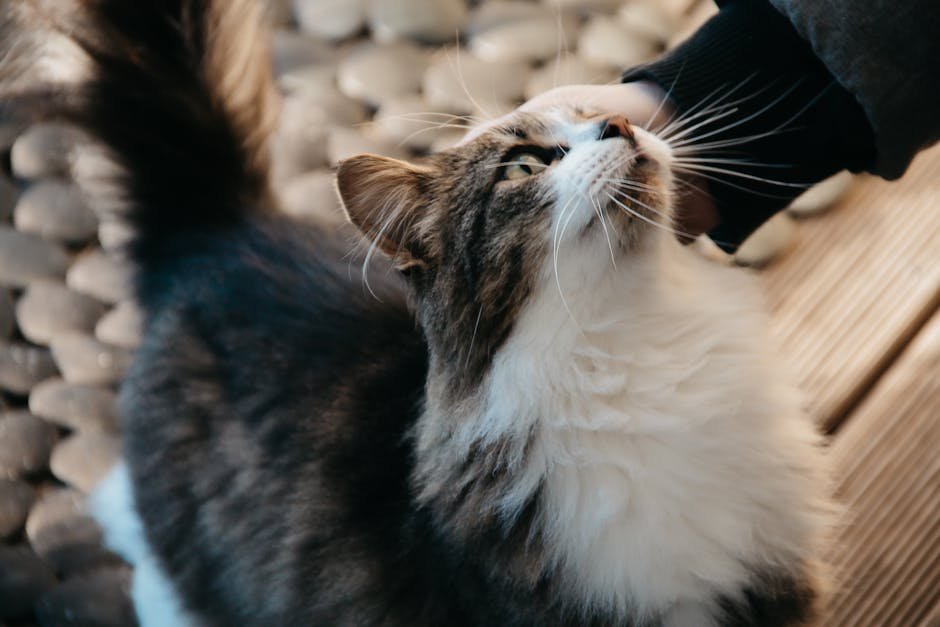Bringing a cat into your home can be a delightful experience, but it also comes with responsibilities. Cats, like humans, can experience anxiety, and it’s often due to unintentional mistakes made by their owners. Understanding these mistakes can help you create a more comfortable environment for your feline friend. Let’s explore ten common errors that might make your cat anxious and how you can avoid them.
Ignoring Your Cat’s Need for Routine
Cats are creatures of habit and thrive on routine. When their daily schedule is disrupted, it can lead to stress and anxiety. Imagine if your morning coffee ritual was suddenly changed without warning—how unsettling would that be? The same applies to cats. Feeding them at different times or changing their litter box schedule can unsettle them. Try to stick to a consistent routine, whether it’s feeding or playtime, to help your cat feel secure and content.
Overcrowded Living Spaces
Cats are territorial animals and need their own space to feel secure. Overcrowding can lead to stress and even aggression. Just like you wouldn’t want to live in a cramped apartment with too many people, cats need their own areas to relax. Ensure each cat has access to its own resources, such as food, water, and a litter box, to avoid territorial disputes. Creating vertical spaces with shelves or cat trees can also provide them with a sense of ownership and peace.
Loud Noises and Sudden Changes

Imagine sitting in a quiet room, only to have a sudden loud noise break the silence—it’s jarring, right? Cats, with their acute sense of hearing, are even more sensitive to loud noises. Household noises like vacuum cleaners, loud music, or even shouting can cause anxiety. Try to keep the noise levels down and introduce any changes gradually. If you’re planning a renovation or a party, consider setting up a quiet space where your cat can retreat.
Neglecting Play and Stimulation

Cats are natural hunters and need regular play and stimulation to satisfy their instincts. Neglecting this need can lead to boredom and anxiety. Think of playtime as a way for your cat to blow off steam, similar to how you might enjoy a workout. Engage them with toys like feather wands or laser pointers to keep their minds and bodies active. Regular play sessions can help reduce anxiety and strengthen your bond with your feline friend.
Inconsistent Social Interaction

Cats may seem independent, but they still crave social interaction. Inconsistent attention can leave them feeling anxious and neglected. It’s akin to having a friend who only calls you sporadically—you never quite know where you stand. Spend quality time with your cat every day, whether it’s through petting, talking, or simply being in the same room. Regular interaction helps them feel loved and secure.
Introducing New Pets Without Caution
Bringing a new pet into the home can be exciting, but it can also be a source of anxiety for your existing cat. Imagine suddenly having a new roommate without any prior warning or introduction. Cats are territorial and may feel threatened by a new animal. Introduce new pets gradually and provide separate spaces for each to help ease the transition. Patience and careful introduction can prevent anxiety and foster peaceful coexistence.
Ignoring Health and Grooming Needs
A cat’s physical health is closely linked to its mental well-being. Ignoring signs of illness or neglecting grooming can lead to anxiety. Just as we feel irritable when we’re unwell, cats can become anxious if they’re in pain or discomfort. Regular vet check-ups, a balanced diet, and proper grooming are essential. Pay attention to any changes in behavior, as they might indicate underlying health issues that need attention.
Forcing Unwanted Affection
While some cats enjoy cuddles, others may find them overwhelming. Forcing affection can make a cat anxious and stressed. Think of it like having someone invade your personal space without your consent—it’s uncomfortable. Respect your cat’s boundaries and let them come to you when they’re ready. Understanding their body language can help you gauge when they’re in the mood for affection.
Not Providing a Safe Environment
Cats need a safe and secure environment to thrive. A chaotic or unsafe home can lead to anxiety. Imagine living in a house where you constantly have to watch your step—it’s anxiety-inducing. Ensure your home is cat-proof by removing hazards and providing safe hiding spots. A calm and secure environment will make your cat feel at ease and reduce anxiety.
Ignoring Behavioral Signs
Cats communicate their anxiety through behavior, and ignoring these signs can exacerbate the problem. It’s similar to overlooking a friend’s plea for help. If your cat is hiding, over-grooming, or showing aggression, it might be a cry for help. Pay attention to any changes in behavior and consult with a vet or animal behaviorist if needed. Early intervention can help address anxiety before it becomes a bigger issue.

Linnea is a born and bred Swede but spends as much time as possible in Cape Town, South Africa. This is mainly due to Cape Town’s extraordinary scenery, wildlife, and atmosphere (in other words, because Cape Town is heaven on earth.) That being said, Sweden’s majestic forests forever hold a special place in her heart. Linnea spends as much time as she can close to the ocean collecting sea shells or in the park admiring puppies.






